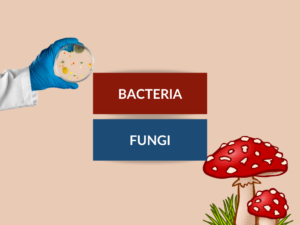What is Pasteurization?
Pasteurization is a heating process that eliminates harmful microorganisms from food and beverages to make them safe for consumption while preserving some of their nutritional value and flavor.
Examples of Pasteurization:
- Pasteurization of milk to kill bacteria, yeasts, and molds.
- Pasteurization of fruit juices to extend their shelf life.
- Pasteurization of canned foods to eliminate pathogens.
What is Sterilization?
Sterilization is a process that completely eliminates all forms of microorganisms, including bacteria, viruses, and fungi, from a surface, material, or biological medium.
Examples of Sterilization:
- Sterilization of surgical instruments to prevent infections during medical procedures.
- Sterilization of laboratory equipment to ensure accurate and uncontaminated experiments.
- Sterilization of baby bottles to eliminate harmful bacteria.
Differences Table:
| Difference Area | Pasteurization | Sterilization |
|---|---|---|
| Level of Microorganism Elimination | Eliminates most harmful microorganisms, but some can survive. | Eliminates all forms of microorganisms, including spores. |
| Process Temperature | Usually conducted at temperatures below 100°C (212°F). | Typically requires higher temperatures, often achieved through autoclaving or dry-heat methods. |
| Heat Treatment Duration | Shorter duration, ranging from a few seconds to several minutes. | Longer duration, ranging from several minutes to hours. |
| Effect on Nutrients and Flavor | Preserves some nutrients and flavor while reducing microbial loads. | May cause some loss of nutrients and flavor due to higher temperature exposure. |
| Application in Food Industry | Widely used in the dairy industry, beverage production, and canned foods. | Commonly used in the canning and preservation of low-acid foods like meats and vegetables. |
| Application in Healthcare | Used in medical equipment preparation and pharmaceutical production. | Essential for sterilizing medical instruments, equipment, and supplies in hospitals and clinics. |
| Safety for Consumption | Produces safe-to-consume products. | Ensures a sterile environment, reducing the risk of infection or contamination. |
| Preservation Method | Preserves perishable products for shorter periods, usually refrigerated. | Enables long-term preservation at room temperature or refrigeration, depending on the product. |
| Effectiveness against Spores | Does not eliminate bacterial spores. | Destroys bacterial spores, making it suitable for sterilizing heat-resistant materials. |
| Microbial Reduction Percentage | Reduces microbial counts by 99.9% or more. | Eliminates all viable microorganisms, achieving a reduction of 100%. |
Conclusion:
In summary, pasteurization and sterilization are both important processes for ensuring the safety and longevity of various products, but they differ in terms of the level of microorganism elimination, temperatures used, duration, effect on nutrients and flavor, applications, safety, preservation methods, and effectiveness against spores.
People Also Ask:
1. What is the main purpose of pasteurization?
Pasteurization aims to eliminate harmful microorganisms from food and beverages while preserving their quality and extending their shelf life.
2. What is the main purpose of sterilization?
The main purpose of sterilization is to completely eliminate all forms of microorganisms, including bacteria, viruses, and fungi, to ensure a sterile environment or product.
3. Is pasteurization 100% effective in eliminating all microorganisms?
No, pasteurization does not eliminate all microorganisms, as some heat-resistant bacteria and bacterial spores may survive the process.
4. Is sterilization commonly used in the food industry?
No, sterilization is less commonly used in the food industry compared to pasteurization. It is primarily applied in the canning and preservation of low-acid foods.
5. Which method is suitable for sterilizing medical instruments?
Sterilization methods like autoclaving or dry-heat sterilization are commonly used for sterilizing medical instruments to ensure a completely sterile environment and prevent infections.


